There are many guinea pig breeds and you probably had no idea how different they can look amongst each other. Even if they have some things in common such as body shape, body size, eyes, ears, etc., each of them is special in some other way and they have many differences.
Guinea pigs are domesticated tailless rodents that usually grow to no more than a foot long. On average, they weigh around three pounds. Their fur can be short or long haired, in a variety of colors, patterns, textures and there are hairless guinea pigs as well.
Table of Content
Information About Guinea Pigs
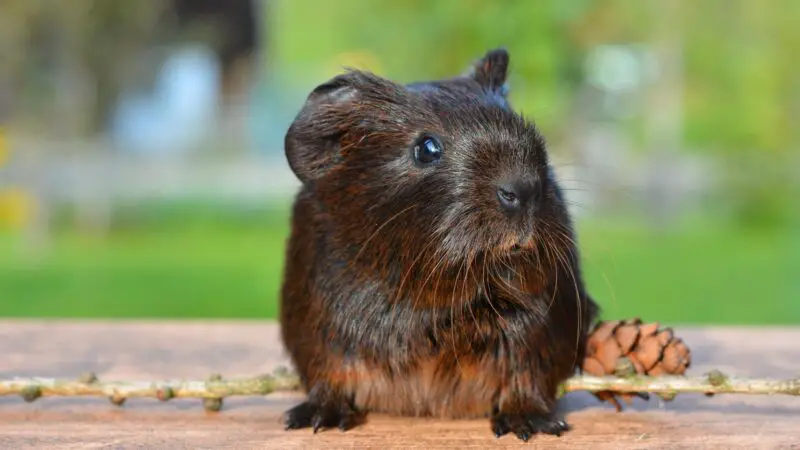
Guinea pigs have small mouths with 20 teeth and front incisors that are similar to rabbit’s incisors. They have small ears and snout with sensory whiskers on each side.
Moreover, their eyes are round and are set on the sides of their heads which allows them to have a 340-degree field of vision. They also have four short legs and little feet with claws. There are many guinea pigs breeds, and all of them have a few distinct things that differentiate them from other breeds.
Domesticated guinea pigs have been kept as pets since about 1,000 BC, making them one of the first pets of the New World that still exist today. Imagine that your guinea pig was kept as a pet by someone over three thousand years ago!
In the modern era, European explorers of the New World brought guinea pigs back to Europe. Their naturally cuddly nature made them a hit on both sides of the Atlantic Ocean.
The Many Looks of the Guinea Pigs
Guinea pigs range from hairless to long haired breeds. If you are choosing to adopt a guinea pig for the first time, short haired guinea pigs are the most popular. Their patterns can be solid or multi-colored, and its fur is easier to maintain.
Long hair guinea pigs need more grooming, making them more high-maintenance. Without daily grooming, their fur can knot and mat, making them extremely uncomfortable.
However, most of these breeds have fur that is soft to the touch. If you feel that you may have allergies related to your pet’s coat, then next time, try getting hairless (or almost hairless) breeds.
Short Haired Guinea Pig Breeds
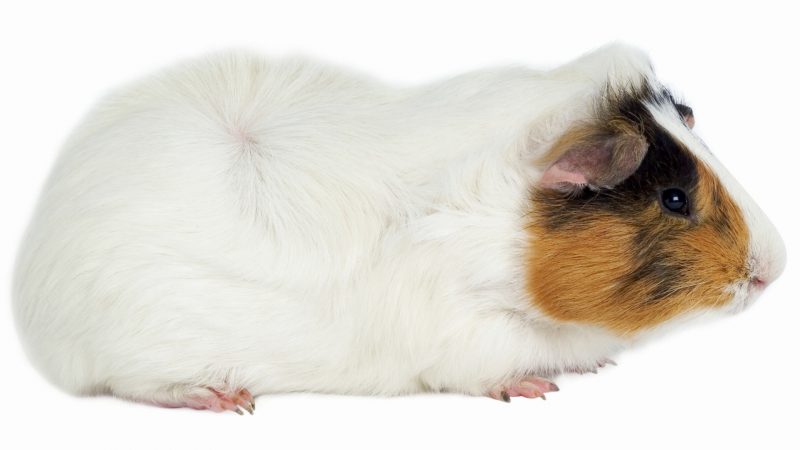
- Abyssinian (Abyssinian Satin) – One of the oldest breeds of domesticated guinea pigs with soft or matte fur. They have fluffs that need consistent maintenance.
- American (American Satin) – The most common breed with a soft coat that sheds less than most breeds. Their coat is easy to brush.
- White Crested – A short haired guinea pig with a small crest on the forehead that is either white or a different color than the rest of the coat.
- Teddy (Teddy Satin) – A crossbreed of the American and Abyssinian guinea pig, it has soft and short fur. They are called “Teddy” because their fur resembles a teddy bear.
Long Haired Guinea Pig Breeds
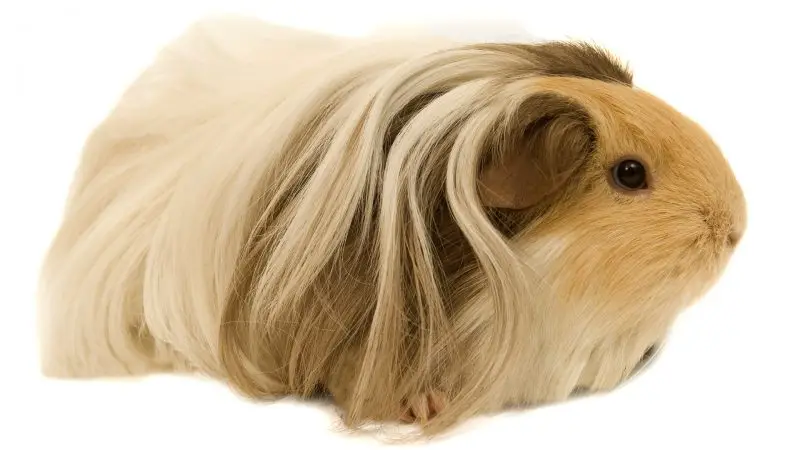
- Coronet – Satin-like fur parts at the neck, growing down the sides.
- Lunkarya – Long curly fur in ringlets; has two coats; rougher fur stands out.
- Merino – They have a long but curly fur.
- Peruvian – Their fur can grow over a foot long, possibly the oldest long-haired breed. The fur parts down the middle, hanging down from the sides. Daily grooming is recommended. This breed is for experienced guinea pig owners.
- Sheba – Hair grows in all directions; has multiple parts.
- Sheltie – Soft long fur grows from the neck and runs down the back.
- Texel – Mostly found in England and they have extremely curly fur.
Hairless Guinea Pigs
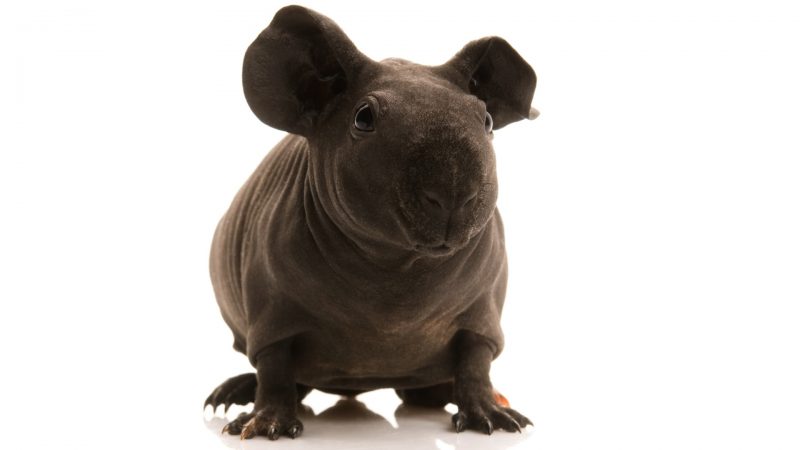
- Skinny Pig – Their body is almost bald, except for the nose and feet which have some hair and their hairless body comes from a genetic mutation. The skinny pigs don’t need grooming, but their skin is extremely sensitive and requires constant care.
- Baldwin – Unlike the skinny pig, the Baldwin is born with fur. Throughout their life, it falls out. After they lose their fur, their skin is sensitive to light, heat, and cold.
The Colors of a Guinea Pig
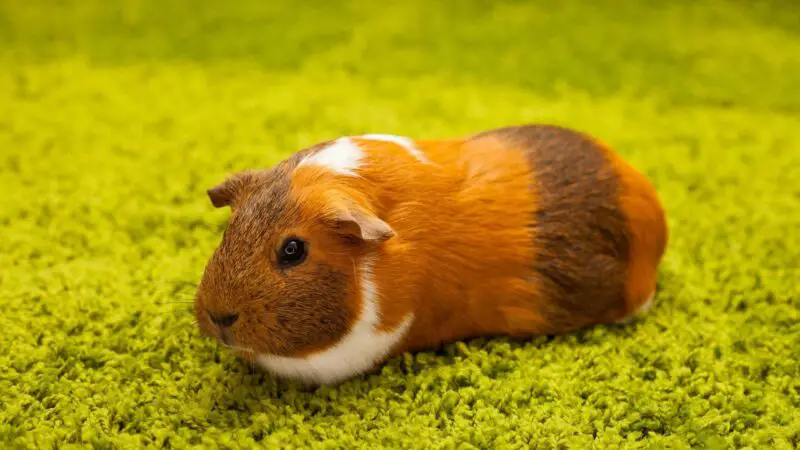
Guinea pigs can be born with one solid color or multi-colored fur and in a variety of color combinations.
Self Coats
Self-coats come in the following colors:
- Albino
- White
- Beige
- Cream
- Golden
- Saffron
- Satin
- Suede
- Lilac
- Red
- Chocolate
- Blue
- Black
Multi-Colored Coats | Patterned Coats
Guinea pigs that have several colors in their fur have designated names, based on the color combination.
- Agouti: The stomach is a solid color, with other color patterns on the rest of the fur.
- Brindle: Solid red and black.
- Carey: Yellow, black, and red.
- Dalmatian: Solid black coat with white, black, or gray spots.
- Dutch: Black, chocolate, gold, and white fur. Dutch guinea pigs are usually a solid color, with white spots on the chest, neck, and face.
- Fox: Black fur with white spots on the face and stomach.
- Harlequin: White, black, and red fur.
- Himalayan: Solid white coat with either red, brown, or black tips on the paws and the face.
- Magpie: Solid white and black fur.
- Mottled: Red, brown, and black coat.
- Otter: Solid black coat with yellow tips on the stomach and the face.
- Rex: Short, rough, thick coats including brown, white or agouti.
- Ridgeback: Has short hair except for a strip of long hair along the base of its spine.
- Roan: Solid white fur with red or black patterns.
- Tan: Solid black coat with red tips on the stomach and the face.
- Ticked: Each individual hair has stripes.
- Tortoiseshell or tortie: Solid red and black.
- Tricolor: White, brown, and black.
How Do I Know a Guinea Pig Is the Right Pet for Me?
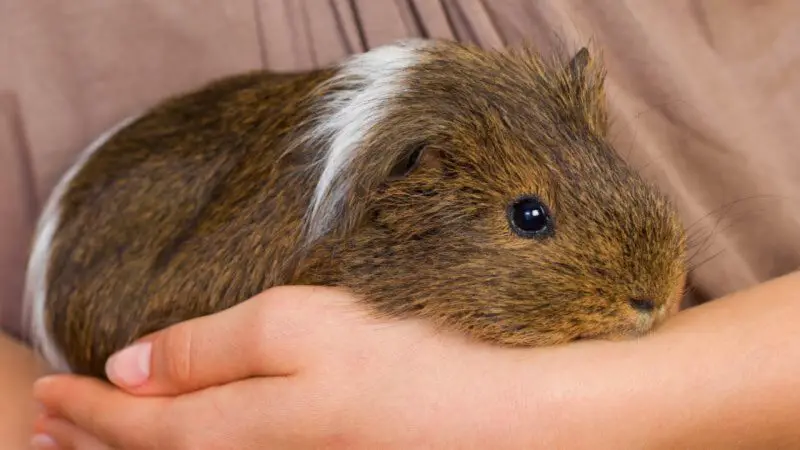
Guinea pigs are lovely pets that can bring plenty of love and affection into your home. The breed you choose to adopt is up to personal preference, but the choice should depend on the amount of time you can invest in your guinea pig. Short-haired and hairless breeds are great for working owners.
If you aren’t out of your home for several hours of the day, and you can devote time every day to your guinea pig, then a long-haired breed would suit you fine.
Related: What Guinea Pig Is Right For Me? | All You Need to Know!
How Can I Tell Which Breed I Am Adopting?
Even with the various descriptions of guinea pig breeds, you may find it difficult to determine which breed you are adopting.
Adopting from a rescue organization or a shelter is always best because these guinea pigs need loving homes. Ask which breed you are adopting if you want to know your guinea pig’s background. The professionals of the organization or shelter will share the information with you.
If you purchase your guinea pig from a pet store, the team working there will know the breeds of the guinea pigs they have.
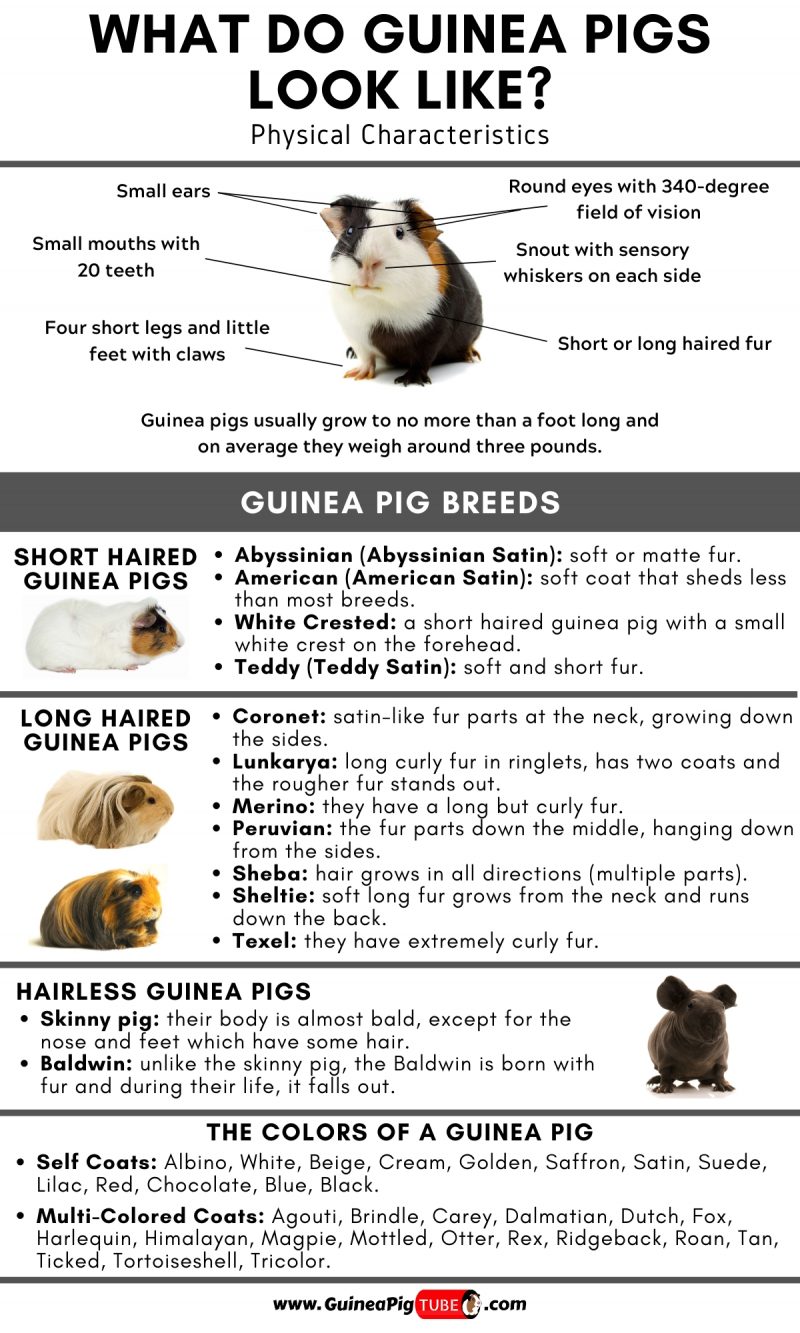
Guinea pigs are small, fluffy pets and they aren’t so hard to take care of. All of the guinea pig breeds are smart and they love to play with their owners and learn some tricks.
Generally, every guinea pig has almost the same personality. They love to be active and they aren’t aggressive, but their look is a bit different. There are short haired, long haired and hairless guinea pigs. These breed types have different fur lengths, but also slightly different care and grooming requirements.
List of Sources
A Quantitative Study of Genic Effects on Guinea-Pig Coat Colors
Feeding and breeding of laboratory animals; breeding of guinea-pigs
